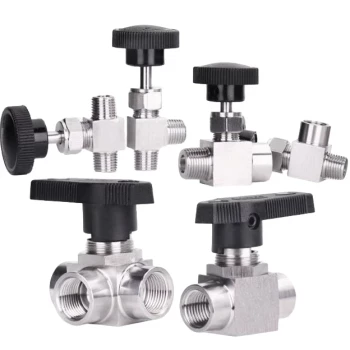In short, high vacuum furnaces offer an extremely low risk of contamination, while low vacuum furnaces present a moderate risk. This fundamental difference stems directly from the quality of the vacuum achieved, which dictates how many atmospheric particles—like oxygen and water vapor—remain in the chamber to potentially react with your materials during a heating cycle.
The decision between a low and high vacuum furnace is not just about contamination; it is a critical trade-off between achieving ultimate material purity and managing operational speed, temperature limits, and overall cost.
The Source of Contamination: Why Vacuum Level Matters
The term "contamination" in this context refers to the unwanted chemical reactions between your workload and residual gases in the furnace. The primary purpose of the vacuum is to remove these reactive gases.
Low Vacuum: Moderate Purity, High Efficiency
A low vacuum furnace, sometimes called a partial pressure or atmosphere furnace, removes the vast majority of atmospheric air from the chamber.
However, a significant number of gas molecules remain. This environment is sufficient for many heat-treating processes, but the presence of residual oxygen and water vapor creates a moderate risk of slight oxidation or other unintended surface reactions.
High Vacuum: Ultimate Purity, Slower Process
A high vacuum furnace uses a more sophisticated multi-stage pumping system to remove vastly more gas molecules than a low vacuum system.
By creating a much purer environment, it dramatically reduces the chance for a reactive molecule to encounter the material's surface. This results in an extremely low risk of contamination, which is critical for sensitive materials.
Understanding the Key Trade-offs
Choosing the right furnace requires looking beyond contamination risk alone. The correct choice depends on balancing performance with operational realities.
Processing Temperature
High vacuum furnaces are capable of reaching significantly higher temperatures, often up to 2200°C.
Low vacuum furnaces typically have a lower maximum operating temperature, generally around 1700°C. This limits the types of materials and processes they can handle.
Cycle Time and Throughput
Low vacuum furnaces have much faster pump-down and overall cycle times. Removing less air is a quicker process, making them ideal for higher throughput production environments.
High vacuum furnaces are inherently slower because achieving the ultra-high vacuum level requires longer and more complex pumping cycles.
Cost of Ownership
Low vacuum furnaces have a lower initial purchase price and generally lower operational and maintenance costs. Their simpler design makes them more economical.
High vacuum systems represent a significant investment. The advanced pumping technology, superior chamber construction, and complex controls lead to higher initial and ongoing costs.
Making the Right Choice for Your Application
Your specific goal determines which set of trade-offs is acceptable.
- If your primary focus is ultimate material purity and high-temperature processing: The higher cost and slower cycle time of a high vacuum furnace are a necessary investment for processing reactive metals, medical implants, or advanced ceramics.
- If your primary focus is cost-efficiency and high throughput for standard materials: The moderate contamination risk of a low vacuum furnace is an acceptable and economical choice for applications like annealing, tempering, and general hardening.
Ultimately, selecting the correct furnace is about aligning the tool's capabilities with your specific technical and financial requirements.
Summary Table:
| Feature | Low Vacuum Furnace | High Vacuum Furnace |
|---|---|---|
| Contamination Risk | Moderate | Extremely Low |
| Max Temperature | ~1700°C | Up to 2200°C |
| Cycle Time | Fast | Slow |
| Cost | Lower | Higher |
Need a furnace tailored to your lab's unique needs? Leveraging exceptional R&D and in-house manufacturing, KINTEK provides diverse laboratories with advanced high-temperature furnace solutions. Our product line, including Muffle, Tube, Rotary Furnaces, Vacuum & Atmosphere Furnaces, and CVD/PECVD Systems, is complemented by our strong deep customization capability to precisely meet your experimental requirements. Contact us today to enhance your material processing with reliable, high-performance furnaces!
Visual Guide

Related Products
- Vacuum Heat Treat Furnace with Ceramic Fiber Liner
- Vacuum Hot Press Furnace Machine Heated Vacuum Press Tube Furnace
- 2200 ℃ Tungsten Vacuum Heat Treat and Sintering Furnace
- 2200 ℃ Graphite Vacuum Heat Treat Furnace
- Vacuum Induction Melting Furnace and Arc Melting Furnace
People Also Ask
- What are the common applications of continuous vacuum furnaces in metal heat treatment? Boost Efficiency and Quality in High-Volume Production
- What does a vacuum furnace do? Achieve Superior Material Processing in a Pure Environment
- How does a vacuum furnace prevent heat transfer and contamination? Achieve Ultimate Material Purity
- Why use a vacuum furnace? Achieve Unparalleled Material Purity and Process Control
- Where are vacuum furnaces used? Critical Applications in Aerospace, Medical, and Electronics



















